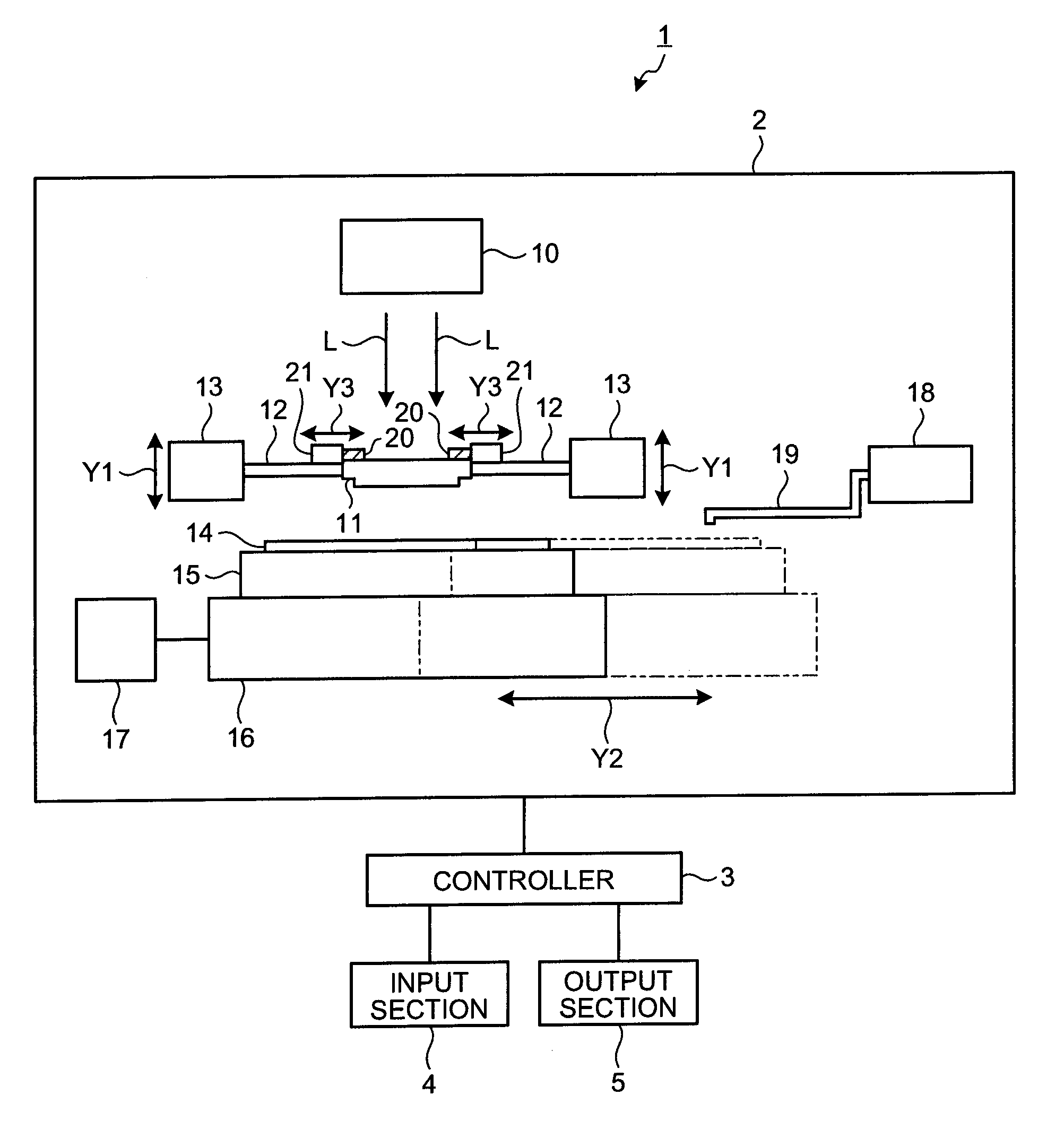Imprint method and template for imprinting
a technology of imprinting and printing method, which is applied in the direction of electric/magnetic/electromagnetic heating, instruments, photomechanical equipment, etc., can solve the problems of difficult to achieve resolution to the extent that complies with the latest design rule, and become difficult to form a miniaturized pattern
- Summary
- Abstract
- Description
- Claims
- Application Information
AI Technical Summary
Benefits of technology
Problems solved by technology
Method used
Image
Examples
first embodiment
[0046]A first embodiment of the present invention will be described. According to the first embodiment, exposing time for a region corresponding to a pattern periphery region of a substrate is adjusted, for instance, by shutting out light by a shutter (which is a light shielding member) for a predetermined period of time.
[0047]FIG. 1 is a schematic view showing one example of a structure of a nano-imprint apparatus according to the first embodiment of the present invention. As shown in FIG. 1, the nano-imprint apparatus 1 according to the first embodiment includes a nano-imprint machine 2, a controller 3, an input section 4, and an output section 5. The nano-imprint machine 2 executes pattern printing on a substrate 14 using the nano-imprint technique, the substrate 14 being a sample. The controller 3 controls an operation of each of the constructing parts of the nano-imprint apparatus 1. The input section 4 inputs instruction regarding processing operation of the nano-imprint appar...
second embodiment
[0079]A second embodiment of the present invention will be described. In the second embodiment, for example, a transmissive film with a predetermined transmittance is arranged between the substrate and the light source, for the purpose of adjusting light intensity in exposure with respect to the region on the surface of the substrate corresponding to the pattern periphery region.
[0080]FIG. 12 is a schematic diagram showing one example of a structure of a nano-imprint apparatus according to the second embodiment. As shown in FIG. 12, a nano-imprint apparatus 201 according to the second embodiment has a nano-imprint machine 202 which does not have the shutter (corresponding to the shutter 20 shown in FIG. 1) or the shutter moving units (corresponding to the shutter moving unit 21 shown in FIG. 1). Meanwhile, instead of the template 11 as shown in FIG. 1, the nano-imprint machine 202 has a template 211 where a transmissive film 220 with a predetermined transmittance is arranged. Moreov...
PUM
| Property | Measurement | Unit |
|---|---|---|
| size | aaaaa | aaaaa |
| exposing time | aaaaa | aaaaa |
| light intensity | aaaaa | aaaaa |
Abstract
Description
Claims
Application Information
 Login to View More
Login to View More - R&D
- Intellectual Property
- Life Sciences
- Materials
- Tech Scout
- Unparalleled Data Quality
- Higher Quality Content
- 60% Fewer Hallucinations
Browse by: Latest US Patents, China's latest patents, Technical Efficacy Thesaurus, Application Domain, Technology Topic, Popular Technical Reports.
© 2025 PatSnap. All rights reserved.Legal|Privacy policy|Modern Slavery Act Transparency Statement|Sitemap|About US| Contact US: help@patsnap.com



